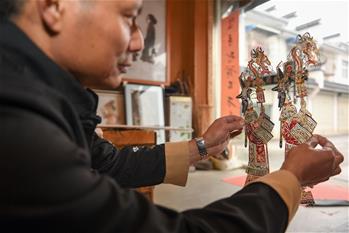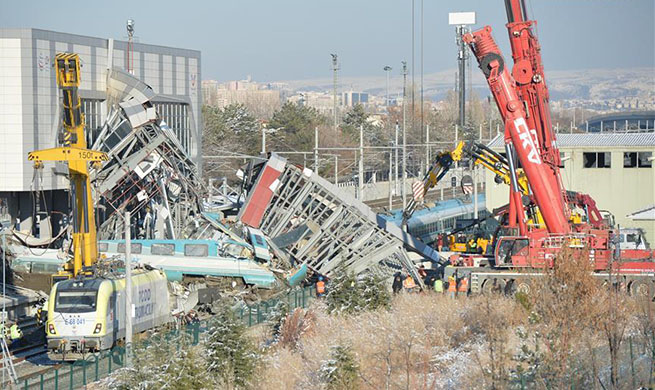CHICAGO, Dec. 12 (Xinhua) -- Researchers at Washington University School of Medicine in St. Louis have identified some of the key steps taken by peripheral nerves in the arms and legs as they regenerate.
This lays out a path that neurons of the spinal cord might be able to follow, potentially leading to improved recovery for people paralyzed by spinal cord injuries.
The researchers turned to a unique kind of sensory cell that spans the central nervous system and the peripheral nervous system. Known as dorsal root ganglion neurons, these cells have long tendrils, called axons, with two offshoots. One branch of the axon connects to cells in the body's periphery and can regenerate if cut; the other side links up with cells in the spinal cord and cannot regrow after injury.
The researchers grew mouse dorsal root ganglion neurons in the lab and then cut them to find out what biological processes occur as the cells regrow their axons. They also cut the sciatic nerve which runs up the leg and into the spinal cord through the dorsal root ganglia in mice.
Then they identified a suite of genes needed to be turned off for the axons to regenerate. To be specific, a set of genes related to sending and receiving chemical and electrical signals, the primary duty of mature neurons, had to be silenced for the injury to heal.
"The injured neuron has to stop functioning as a neuron and focus on repairing itself," said Valeria Cavalli, an associate professor of neuroscience at the university. "This means the neuron has to transition back to an immature state so it can re-engage developmental programs and regrow."
Though the idea of cells becoming less mature in order to regenerate is not new, the study provided evidence in support of that idea in the study, identified the key molecular and genetic players involved in regressing to a less mature state, and showed that the timing of the regression was crucial to successful recovery.
The researchers are now working on developing a more detailed understanding of when and for how long specific genes must be shut off, and whether silencing the genes in neurons from the central nervous system will induce them to regrow after injury.
"We haven't found a cure, but we have a better understanding now of what injured neurons do," Cavalli said. "From here, we can build new hypotheses and work toward applying them to people."
About 11,000 people in the United States survive a spinal cord injury every year.
The findings have been published in Proceedings of the National Academy of Sciences.

















